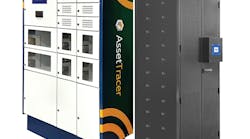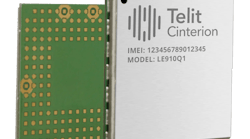Software isn't the only factor driving wider adoption of RFID. Perhaps the largest single enabler has been the emergence of Gen2 -- officially known as the EPCglobal Class-1 Generation-2 UHF RFID Protocol for Communications -- which is the standard protocol for EPC (Electronic Product Code) tag transmissions.
Although the Gen2 standard was ratified late in 2004, it wasn't until mid-2005 that hardware prototypes began to surface. Only months later would production-grade equipment start trickling onto the streets, long after the first wave of early RFID adopters had begun piloting programs using the earlier Class 0 and Class 1 hardware.
Theoretically, the benefits of Gen2 are many. In addition to providing a common standard to get everyone on the same page, Gen 2 offers increased read speeds -- 4.5 times that of the Class 1 standards -- and better range, which helps to ensure more complete polling even in difficult environments. Gen2 also employs new anti-collision algorithms to improve read accuracy and data reliability.
Gen2 tags can contain more onboard data. Their flexible memory sizes, user-defined spaces, password security, and kill functions that can remove tags from circulation at the reader offer tremendous opportunities for future RFID applications. They also support international power and bandwidth regulations, enabling worldwide interoperability and helping to satisfy regulatory requirements and garner ISO ratification.
With new equipment readily available, if you haven't begun piloting your RFID program yet or are just getting under way, you should plan to use Gen2. Early adopters of previous standards, stuck with outdated equipment that in some cases is not firmware updatable, have found themselves needing to upgrade. New customers should learn from this mistake and purchase only enterprise-grade, upgradable equipment from seasoned pros such as Intermec and Zebra Technologies.
As Gen2 has become the single RFID standard to rally around, it's received widespread vendor support. For consumers, this will hopefully translate to increased competition, with lower hardware prices to follow.
Still, even Gen2 is unlikely to be the last word in EPC standards. The U.S. Army has already requested yet another next-generation tag, for example, and there will likely still remain varying degrees of standards compliance among vendors. Specifications such as EPCglobal's ALE (Application Level Events) will also need to be updated to take full advantage of new data and tagging opportunities in Gen2, so even new customers should be prepared to grow. Nonetheless, the rise of Gen2 should finally help smooth the runway for companies looking to launch RFID in 2006.
[InfoWorld Electronic News -- 04/18/06]

